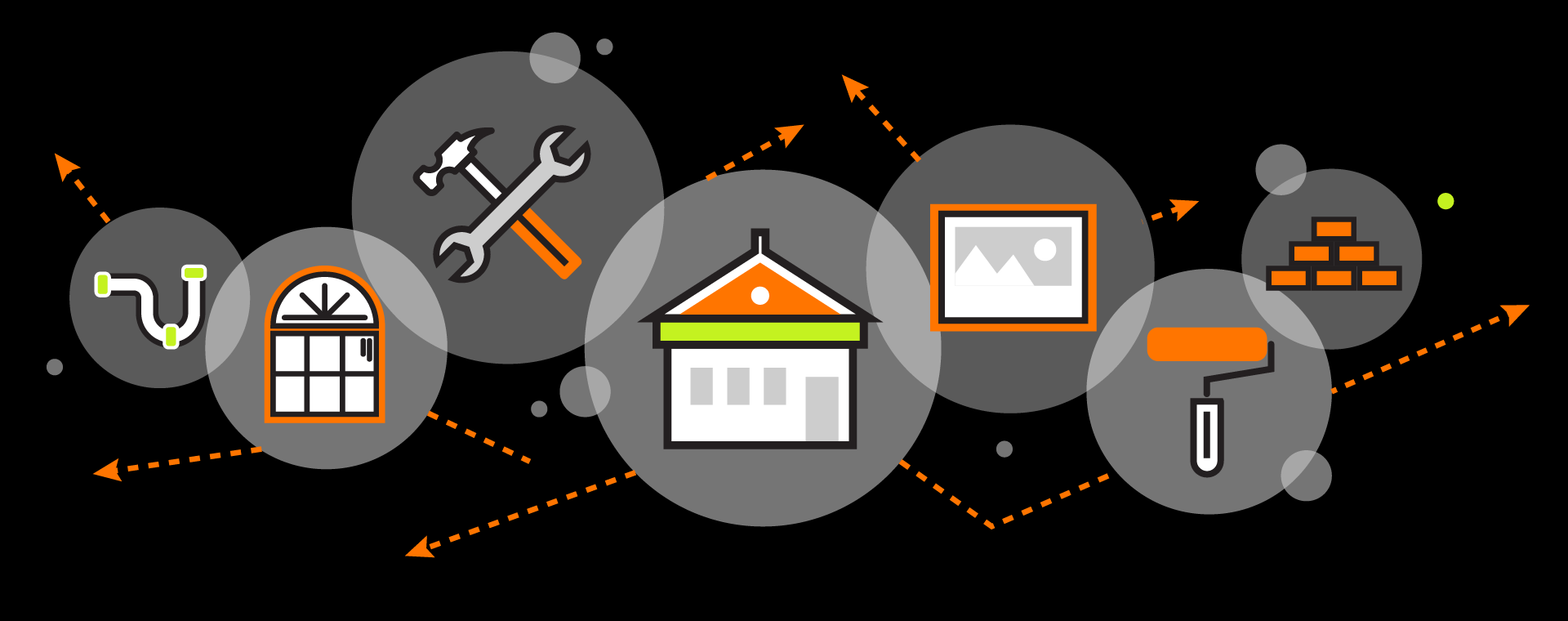Website Tracking Guide: Tools & Metrics That Matter
Every day, potential customers visit your website, browse your pages, and leave, sometimes without a trace. Without website tracking and analytics, you’re making business decisions in the dark, guessing which marketing channels work, which pages convert, and where visitors lose interest.
Website tracking changes that. When implemented correctly, it reveals exactly who visits your site, how they found you, what they do once they arrive, and most importantly, what drives them to convert (or leave). This data transforms your website from a digital brochure into a revenue-generating machine where every decision is backed by real user behavior.
In this guide, you’ll learn how website tracking works, which free tools to use, what metrics actually matter for your business, and how to implement tracking in 30 days or less, even if you’ve never touched analytics before.
Key Takeaways
- Website tracking works by embedding tracking codes in your website, which collect and send user data to analytics platforms for you to analyze, turning invisible visitor behavior into actionable business intelligence.
- Combine Google Tag Manager with Google Analytics 4 as a free, reliable foundation for data collection and analysis, supplemented by Google Search Console for SEO insights and Meta Pixel for social media attribution.
- Track metrics tied to business outcomes, not vanity numbers. Focus on conversion rates, revenue attribution, and customer journey paths rather than just pageviews and bounce rates.
- Align tracking methods with specific business goals (awareness, engagement, conversion) to make data-driven decisions that actually move the needle on revenue and growth.

What is Website Tracking and Why Does It Matter?
Understanding Website Tracking
Website tracking is the process of monitoring and recording how visitors interact with your website. Every click, scroll, form submission, and page view creates a data point that reveals visitor behavior.
Think of it like security cameras in a retail store, except instead of watching for theft, you’re learning which displays attract attention, where customers get confused, and what ultimately drives them to make a purchase.
Modern website tracking captures:
- User interactions: Clicks, taps, scrolls, form fills, video plays
- Webpage activity: Which pages visitors view, how long they stay, where they enter and exit
- Engagement metrics: Time on page, pages per session, bounce rate, scroll depth
- Conversion events: Purchases, form submissions, downloads, account signups
The methods used to capture this data include tracking pixels (tiny invisible images that fire when pages load), JavaScript tracking scripts (code snippets that are triggered by a chosen parameter and monitor user actions), and event tracking (code that records specific interactions like button clicks or video plays).
How Website Tracking Works
If you’ve ever wondered how Google Analytics “knows” someone visited your website, here’s the technical process simplified into four steps:
1. Tracking codes are embedded in your website
A small JavaScript snippet (like the GA4 tracking code) is added to every page of your site, usually in the header section or deployed via Google Tag Manager. This code loads automatically whenever someone visits any page on your site.
2. The code collects data as users interact with your site
Every time a visitor clicks a button, views a page, fills out a form, or completes a purchase, the tracking code captures that action. It also records contextual information like device type (mobile, tablet, desktop), location (city/country based on IP address), traffic source (Google search, Facebook ad, direct visit), and timestamp.
3. Data is sent to analytics platforms for processing and analysis
The collected information is transmitted in real-time to platforms like Google Analytics 4, where sophisticated algorithms organize it into readable reports, visualizations, and insights. Raw data like “User 12345 clicked button A at 3:47pm” becomes “Your CTA button receives 47 clicks per day with a 23% conversion rate.”
4. You access insights through dashboards and reports
Instead of drowning in spreadsheets, analytics platforms translate millions of data points into actionable metrics, visual charts, conversion funnels, and heat maps. You can see at a glance what’s working (double down on that) and what’s broken (fix it immediately).
Why Website Tracking is Essential
Most businesses treat website tracking as a “nice to have.” It’s actually the foundation of modern digital marketing. Here’s why you can’t afford to skip it:
Validates strategy effectiveness in real-time
Launched a new landing page? Changed your pricing structure? Started a Facebook ad campaign? Without tracking, you’ll wait weeks or months to see if it worked. With tracking, you know within days, or even hours, whether your strategy is driving results or burning budget.
Transforms guesswork into competitive advantage
Your competitors are either tracking everything and optimizing constantly, or they’re flying blind. Businesses that track and act on data consistently outperform those that don’t because they know exactly which channels, content, and campaigns deliver ROI. Every decision becomes data-driven rather than based on hunches.
Identifies high-value customer paths and unseen blockers
Website tracking reveals the exact journey your best customers take from first click to final purchase. It also exposes friction points you’d never see otherwise, forms that confuse users, pages that load slowly on mobile, checkout steps where 60% of people abandon their carts. You can’t fix what you can’t see.
Enables revenue attribution and ROI proof
Which marketing channel actually drives sales? Is it Google Ads, SEO, social media, or email? Tracking connects the dots between marketing spend and revenue, showing you exactly which touchpoints lead to conversions. This allows you to prove ROI to stakeholders and justify every dollar you spend.
Top Free Website Tracking Tools
You don’t need an enterprise analytics budget to track your website effectively. These four free tools provide everything most small to mid-sized businesses need:
Google Analytics 4 (GA4)
The foundational tracking tool that every website needs, Google Analytics shows you traffic sources (where visitors come from), user behavior (what they do on your site), conversion paths (how they move toward goals), and real-time data (who’s on your site right now).
Why it matters: It’s completely free with no limits for most businesses, integrates with Google Ads and Search Console, and provides the most comprehensive view of website performance available.
What to track: Traffic sources, landing page performance, conversion rates, user demographics, device types, and engagement metrics.
Google Search Console
Reveals how your site performs in organic search. Search Console shows which keywords drive traffic to your site, what pages rank in Google, how often your site appears in search results (impressions), and technical SEO issues affecting visibility.
Why it matters: SEO drives long-term, sustainable traffic. Search Console is the only tool that shows you exactly what searches bring people to your site and which pages Google considers most relevant.
What to track: Search queries, click-through rates, average position, indexing issues, mobile usability problems, and Core Web Vitals.
Google Tag Manager
Simplifies adding and managing tracking codes without editing website code every time. Tag Manager acts as a central hub for all your tracking scripts, analytics, ad pixels, and conversion tracking, allowing you to deploy, update, or remove them through one interface.
Why it matters: Saves developer time (no code changes needed), reduces tracking errors (test before publishing), and gives marketers control over implementation. You can add Facebook Pixel, Google Ads conversion tracking, or custom event tracking in minutes instead of days.
What to track: Custom events (button clicks, form submissions, video plays), e-commerce transactions, outbound link clicks, and scroll depth triggers.
Meta Pixel (Facebook/Instagram)
Tracks visitor actions for retargeting and measures social media campaign effectiveness. The Meta Pixel monitors which pages users visit after clicking your Facebook or Instagram ads, tracks conversions (purchases, signups, downloads), and builds custom audiences for retargeting.
Why it matters: If you run any Facebook or Instagram ads, the Pixel is non-negotiable. It allows you to retarget website visitors with ads, create lookalike audiences of your best customers, and prove that social media drives actual revenue, not just likes.
What to track: Page views, add-to-cart events, purchases, lead submissions, and custom conversions tied to specific business goals.
Best Practices for Website Tracking Setup
Aligning Goals with Tracking
The biggest mistake businesses make? Tracking everything without a clear purpose. Before you install a single tracking code, answer this question: What specific business outcome am I trying to improve?
Set specific, measurable goals tied to revenue
Don’t track “engagement” as a vague concept. Instead, set concrete goals like:
- Increase lead form submissions by 25% in 90 days
- Reduce cart abandonment rate from 70% to 55%
- Improve email signup conversion rate from 2% to 4%
- Decrease bounce rate on product pages below 40%
Each goal requires different tracking. Lead generation? Track form submissions and thank-you page views. E-commerce? Track add-to-cart, checkout initiation, and purchase completion. Content site? Track time on page, scroll depth, and newsletter signups.
Optimize ad campaigns and marketing efforts with tracking data
Every marketing dollar you spend should be trackable back to results. Use UTM parameters (special URL tags) to identify which campaigns, channels, and specific ads drive traffic and conversions.
For example, instead of sharing “yoursite.com,” use “yoursite.com?utm_source=facebook&utm_medium=cpc&utm_campaign=spring_sale” so you can see exactly which Facebook ad campaign drove each visitor.

Ensuring Compliance and Security
Website tracking is powerful, but it comes with legal responsibilities. Violating data privacy laws can result in massive fines and destroy customer trust.
Implement consent mechanisms to secure customer data
In most regions (EU, California, Brazil), you need explicit user consent before placing tracking cookies. Use a cookie consent banner that:
- Appears before any tracking scripts fire
- Explains what data you collect and why
- Gives users clear options to accept or reject
- Allows granular control (reject advertising cookies but accept essential ones)
Use secure tracking scripts and data collection practices
Always use HTTPS (not HTTP) for your website. Anonymize IP addresses in Google Analytics (GA4 does this by default). Never track sensitive information like passwords, credit card numbers, or health data. Store analytics data securely and limit access to authorized team members only.
Adhere to regulations such as GDPR and CCPA
The two major privacy laws affecting website tracking:
- GDPR (EU): Requires explicit consent before tracking, mandates data deletion requests, and imposes fines up to €20 million for violations
- CCPA (California): Requires clear disclosure of tracking practices and easy opt-out mechanisms for users
Consult with a legal professional to ensure your tracking practices comply with regulations in your target markets.

How to Implement Website Tracking Code
Ready to start tracking? Here’s the step-by-step technical process:
Insert tracking scripts into your website
The standard approach is to deploy a sitewide tracking code on every page to measure basic metrics such as visits, pageviews, and time on site. This is typically the GA4 tracking script placed in your website header or footer.
The easiest method for most websites:
- Copy your GA4 tracking code from Google Analytics
- Install it via Google Tag Manager (recommended) or paste directly into your website’s header
- Verify it’s working by visiting your site and checking real-time reports in GA4
Monitor custom events like form submissions and content engagement
Beyond basic pageviews, set up event tracking for specific actions that matter to your business:
- Form submissions: Track when users complete contact forms, quote requests, or signup forms
- Button clicks: Monitor CTA buttons, “Add to Cart,” “Request Demo,” or “Download” clicks
- Video engagement: See who watches your videos and how long they watch
- Scroll depth: Understand if users actually read your content or bounce immediately
In Google Tag Manager, you set up “triggers” (conditions that fire tracking) and “tags” (the tracking code that executes). For example, a trigger might be “user clicks the Download button,” and the tag sends that event to GA4.
Track session recordings to identify friction points
Install Microsoft Clarity (free) to record actual user sessions. Filter recordings by:
- Users who converted (learn what worked)
- Users who bounced quickly (see what confused them)
- Users who rage-clicked (identify broken elements)
- Mobile users (spot mobile-specific issues)
Watching even 10 session recordings per week gives you invaluable insights that raw numbers can’t provide.
Key Metrics to Monitor for Website Success
Not all metrics are created equal. Focus on these three categories based on your business goals:
Traffic & Visibility Metrics
Track impressions, clicks, and click-through rates (CTR)
Impressions show how often your site appears in search results or ads. Clicks show how many people actually visit. CTR (clicks ÷ impressions) reveals how compelling your messaging is.
Low CTR? Your headlines, meta descriptions, or ad copy aren’t convincing enough. High impressions but low clicks? You’re visible but not attractive to your target audience.
Monitor traffic sources to identify top-performing channels
Which channels drive the most qualified visitors? Organic search? Paid ads? Social media? Direct traffic? Referrals from other websites?
Track not just volume but quality. A channel that sends 10,000 visitors with a 0.5% conversion rate (50 conversions) is worse than a channel sending 1,000 visitors with a 8% conversion rate (80 conversions).
Analyze new vs. returning visitors
A healthy website has a mix of both. Too many new visitors and few returning? Your content isn’t compelling enough to bring people back. Too many returning visitors? Your marketing isn’t reaching new audiences effectively.
Aim for roughly 60-70% new visitors and 30-40% returning for most businesses.
Engagement Metrics
Track session duration, pages per session, and bounce rate
- Session duration: How long visitors stay on your site (longer usually = more engaged)
- Pages per session: How many pages they view (higher = more exploration)
- Bounce rate: Percentage who leave after viewing just one page (lower is better)
Warning: Don’t obsess over engagement metrics alone. A visitor who spends 30 seconds, views one page, fills out your contact form, and leaves is infinitely more valuable than someone who browses 10 pages for 20 minutes but never converts.
Analyze user journey and navigation paths
In GA4, use the “Path exploration” report to see the most common routes users take through your site. This reveals:
- Which pages act as effective entry points
- Where users drop off in your funnel
- Which content keeps users engaged
- Navigation problems causing confusion
Optimize the paths that lead to conversions. Eliminate friction on the paths where users abandon.
Conversion Metrics
These are the metrics that actually matter for revenue.
Measure conversion rates by traffic source and landing page
Your overall conversion rate matters, but source-specific conversion rates tell the real story. You might discover:
- Google Ads traffic converts at 8%
- Organic search traffic converts at 4%
- Facebook traffic converts at 1%
This data tells you where to invest more budget (Google Ads) and what needs improvement (Facebook targeting or landing pages).
Monitor conversion funnels to identify drop-off points
Set up funnel visualization to track the path to conversion:
- Landing page → 100 visitors
- Product page → 60 visitors (40% dropped off)
- Add to cart → 30 visitors (50% dropped off)
- Checkout → 20 visitors (33% dropped off)
- Purchase → 12 visitors (40% dropped off)
Each drop-off point represents a fixable problem. Maybe your product pages don’t answer key questions. Maybe your checkout process is too complicated. Fix the biggest leaks first for maximum impact.
Track micro-conversions alongside macro-conversions
Macro-conversions are your ultimate goals (purchases, qualified leads, signups). Micro-conversions are steps along the way (email signups, PDF downloads, video watches, account registrations).
Why track both? Micro-conversions happen more frequently, giving you faster feedback on what’s working. They also help you understand the full customer journey, most people don’t buy on their first visit.
The Continuous Optimization Loop
Website tracking isn’t a “set it and forget it” activity. The businesses that win are those that consistently review data and act on insights.
Review your data weekly and monthly
- Weekly: Quick check of traffic trends, conversion rates, and any obvious problems (traffic dropped 50%? Page broke?)
- Monthly: Deep dive into specific metrics, compare to previous months, analyze which changes worked
- Quarterly: Big-picture analysis of trends, goal progress, and strategic adjustments
Identify underperforming pages and funnels
Use GA4’s “Pages and screens” report to find:
- High traffic, low conversion pages: Lots of visitors but poor results, these need optimization ASAP
- High bounce rate pages: Users leave immediately, content doesn’t match expectations or has UX issues
- Low traffic, high conversion pages: Hidden gems, promote these more to drive more qualified traffic
Test improvements systematically
Don’t make random changes and hope for the best. Use A/B testing to compare variations:
- Test new headlines, CTAs, or page layouts
- Show 50% of visitors Version A, 50% Version B
- Let the test run until statistically significant (usually 2-4 weeks)
- Implement the winner, test something else
Even small improvements compound. A 10% increase in conversion rate might seem modest, but over a year that could mean hundreds of additional customers.
Measure impact and iterate
After making changes:
- Wait for sufficient data (don’t judge results after 24 hours)
- Compare to baseline (is it actually better than before?)
- Document what you learned (even failed tests provide insights)
- Iterate and improve (use learnings to inform the next test)
Scale what works
Found a landing page that converts at 12% while others convert at 3%? Figure out why and replicate those elements everywhere. Discovered Instagram ads outperform Facebook? Shift budget accordingly. Double down on winners, cut losers.
Your Path to Successful Website Tracking
Website tracking transforms invisible visitor behavior into actionable business intelligence. The difference between businesses that thrive online and those that struggle often comes down to one thing: knowing what’s working and what isn’t.
Start with the free fundamentals. Google Analytics 4, Search Console, and Tag Manager provide everything most businesses need. Focus on metrics tied to business outcomes rather than vanity numbers. Align your tracking with specific goals, review data consistently, and test improvements systematically.
Most importantly, take action on what you learn. Data without action is just noise. The businesses that win are those that track relentlessly, learn continuously, and optimize constantly.
If you need help implementing a website tracking strategy that actually drives ROI, schedule a free consultation with a member of our team. At TG Marketing, we help businesses set up tracking systems that reveal exactly where to invest your marketing budget for maximum returns. Let’s talk about turning your website data into a competitive advantage.
FAQs
Can you find out who visited your website?
You can identify companies and organizations that visit your website, but not individual people by name. Tools like Google Analytics show general demographics (age range, location, interests) and tools like Leadfeeder or Clearbit can identify which companies visited based on IP addresses, but privacy laws prevent tracking individuals’ identities without consent.
Can someone see if I view their personal website?
No, website owners cannot see your name, email, or personal identity when you visit their site unless you voluntarily provide it. Website analytics show aggregate data (someone from your city visited) and behavioral data (they viewed 3 pages), but not personally identifiable information unless you fill out a form, create an account, or click a tracked email link.
How to track user activity on a website?
Install Google Analytics 4 via Google Tag Manager, set up conversion tracking for key actions. This combination provides traffic data, behavior insights, and visual understanding of how users interact with your site, all available for free and implementable in under an hour.
Which website traffic checker is the best?
Google Analytics 4 is the industry-standard free option for comprehensive traffic analysis. For organic search specifically, use Google Search Console. For competitor traffic analysis (seeing how much traffic other websites get), use SEMrush or Ahrefs. Most businesses should start with GA4 and Search Console before investing in paid tools.






